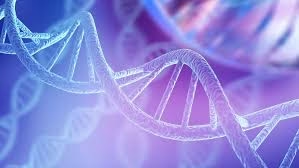Definition, Functions & Classification of Carbohydrates Section A: Definition and Basic Understanding Q1. Define carbohydrates. Why are they also known as “hydrates of carbon”? Answer: Definition:Carbohydrates are organic compounds composed of carbon (C), hydrogen (H), and oxygen (O), usually in Read More …
Blog
Analytical Questions on Biological Oxidation
Electron Transport Chain (ETC) – Components & Inhibitors Section A: Core Components of the ETC Q1. Explain how the structure and arrangement of ETC components facilitate ATP synthesis. Answer: ETC is located in the inner mitochondrial membrane. Electrons from NADH Read More …
Antioxidant Defense System & Detoxification
Introduction Life in an oxygenated environment is a double-edged sword. While oxygen (O₂) is indispensable for aerobic respiration and energy production, its partial reduction inevitably leads to the formation of Reactive Oxygen Species (ROS) — unstable and highly reactive molecules Read More …
Analytical Questions on Enzymes
Definition, Classification of Enzyme, Coenzymes, Cofactors, Activators, and Proenzymes Q1. Enzymes are biological catalysts. Discuss how their structure contributes to their specificity and catalytic efficiency. Answer: Enzymes have a unique three-dimensional structure that includes an active site — a specific Read More …
Analytical Questions on Cell
Cell & Cellular Organelles 🔹 1. Question: How do the structural differences between rough and smooth endoplasmic reticulum (ER) reflect their respective functions in the cell? Model Answer: The rough ER is studded with ribosomes, giving it a “rough” appearance. Read More …
Daily step count of 9,000 to 10,000 may counteract risk of death and cardiovascular disease
Daily step count of 9,000 to 10,000 may counteract risk of death and cardiovascular disease in highly sedentary people Increased step count linked to lower risk regardless of time spent sedentary Date: March 7, 2024 Source: University of Sydney Summary: Read More …
Nobel Prize 2025: Medicine
Nobel Prize 2025: Medicine award to Mary Brunkow, Fred Ramsdell, Shimon Sakaguchi Their pioneering work on peripheral immune tolerance revealed how a special class of immune cells, known as regulatory T cells, act as guardians against autoimmune disease. The Nobel Read More …
Molecular Biology

DNA: The Genetic Material “Transforming factor”: Carries genetic information from generation to generation Memory bank: Reserve bank of genetic information Single mammalian fetal cell contains few picograms of DNA. DNA controls every function of cell through protein synthesis. Why DNA: Read More …
Organ Function Tests
Liver Function Tests Liver is the versatile organ in which maximum metabolism & other biochemical functions are takes place. The importance of liver function tests are – To assess the severity of liver damage. To differentiate different type of Read More …
Acid-Base Balance & Imbalance
Introduction Acid‑base balance refers to the processes by which the body maintains the hydrogen ion concentration ([H⁺]) in body fluids—especially in the blood—within a narrow, physiologically acceptable range. This is critical because many biochemical reactions, enzyme activities, and cellular functions Read More …